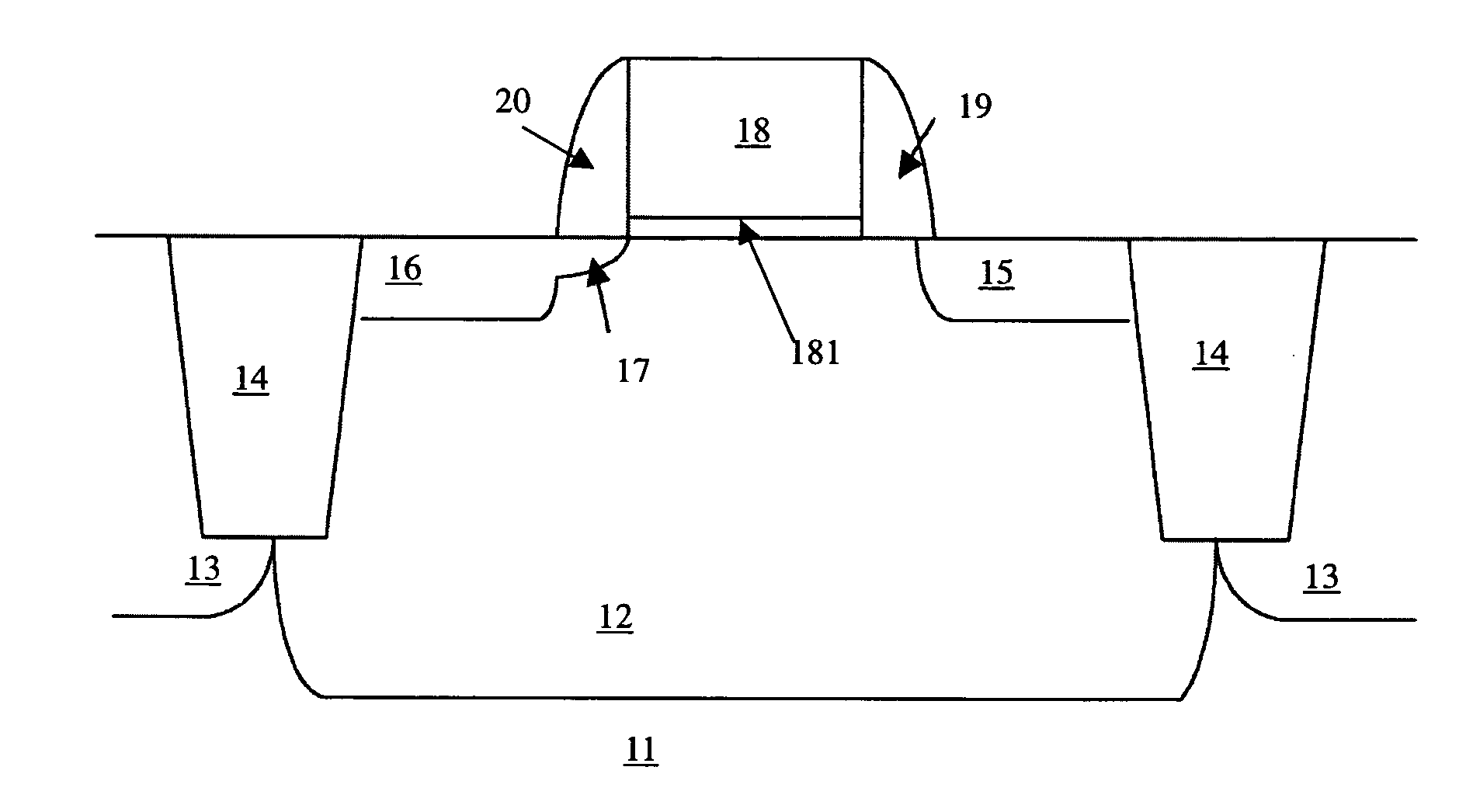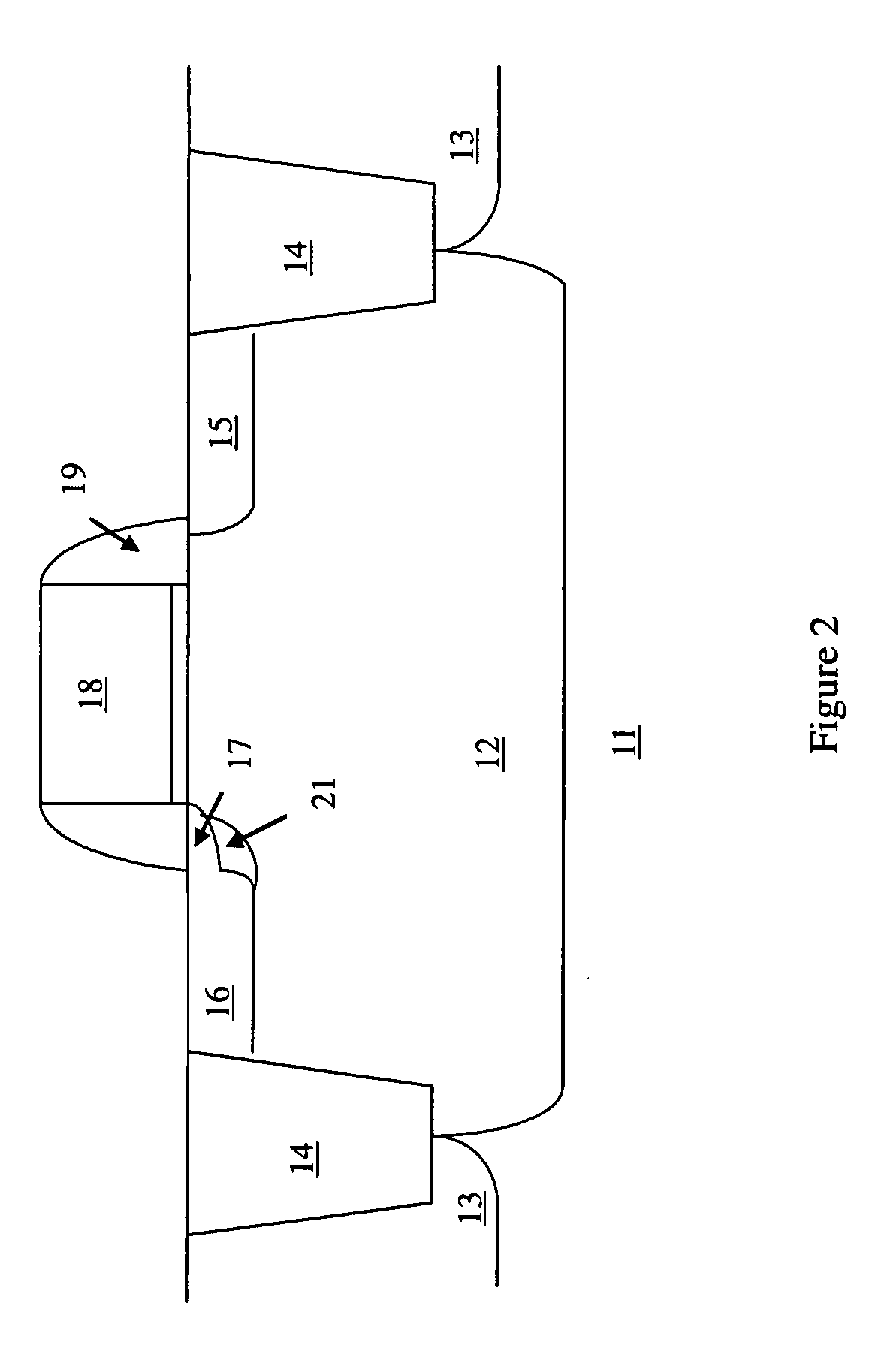Asymmetric-ldd mos device
a technology of mos and transistors, applied in the field ofmos devices, can solve the problems of reducing the maximum output power and efficiency of mos devices, restricting the use of cmos power amplifiers, and long rf soc design, which includes rf power amplifiers, and achieves low breakdown voltage problems. , the effect of improving the rf power performan
- Summary
- Abstract
- Description
- Claims
- Application Information
AI Technical Summary
Benefits of technology
Problems solved by technology
Method used
Image
Examples
Embodiment Construction
[0022]FIG. 1 shows a sectional view of an asymmetric-LDD MOS device according to the present invention. There are a P-substacte 11, a Pwell 12, a Nwell 13, a STI 14, a N+ drain electrode 15, a N+ source electrode 16, a N− LDD region 17, a gate electrode 18, a first spacer 20, and a second spacer 19 in FIG. 1. The P-substacte 11 and the Pwell 12 form a silicon substrate. The gate electrode 18 includes a gate insulating film adjacent to the Pwell 12. The first spacer 20 is adjacent to the N− LDD region 17, but the second spacer 19 is adjacent to the Pwell 12, which is the major difference to conventional MOS transistor. In other words, the major difference to the prior MOS transistor is no N− LDD region at drain side. Therefore, the formed depletion region under reverse drain bias can sustain large voltage for RF Power application.
[0023]According the present invention, the MOS device structure with spacer at both source and drain sides but only LDD implant at the source side. For a NM...
PUM
 Login to View More
Login to View More Abstract
Description
Claims
Application Information
 Login to View More
Login to View More - R&D
- Intellectual Property
- Life Sciences
- Materials
- Tech Scout
- Unparalleled Data Quality
- Higher Quality Content
- 60% Fewer Hallucinations
Browse by: Latest US Patents, China's latest patents, Technical Efficacy Thesaurus, Application Domain, Technology Topic, Popular Technical Reports.
© 2025 PatSnap. All rights reserved.Legal|Privacy policy|Modern Slavery Act Transparency Statement|Sitemap|About US| Contact US: help@patsnap.com



